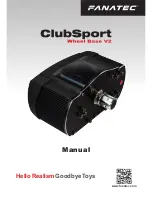
micro
HAM ©
2016
All rights reserved
Special R-port rules: Distinguishing point and Global attributes
TERM
ALTERNATIVE GROUP
Is a group of all alternative antenna paths reaching same end point merged to
one single Antenna Selection.
In some setups (including our example) a particular end point can be reached
using different antenna paths. This situation is shown on picture by red and
blue colors. These paths are equivalent but cannot be fixed separately for a
particular start point because such definition will be limiting – particularly in
configurations with more than two radios. To deal with this problem, Router
combines multiple paths that reach same end endpoint into an
Alternative
Group
. When a user (SMD) attempts to connected to a particular endpoint
and this endpoint is reachable by more than one path, SMD automatically
finds a free path in the Alternative Group.
It works similarly to travel by car using GPS - if one road (path) is blocked,
SMD searches for alternative routes and if another route is found in the
Alternative Group the connection is made. Without this capability, many of the
more complex antenna systems could not be fully utilized.
In some cases, all alternative paths are not equal. For example, if there are shared amplifiers in the system –
one capable of 500W output and a second capable of 1500W output, we want to be able to control which
amplifier is being used. In these cases, the amplifier becomes a
distinguishing point.
If the “Distinguish Point”
option is selected for an R port, any path which uses that port will be excluded from the Alternative Group. Using
our GPS analogy, a distinguishing point is like a way point.
In some situations even a Distinguishing point is not enough to specify how the Alternative Group should be split.
In large Alternative Groups we may not want to split the group into a few distinct paths plus a larger group but
into several “sub groups” where each path in the sub group is equivalent. This is the purpose of
Global
Attributes
. Global Attributes allows marking particular end point by a letter and than using the letter as a
parameter to define the “sub groups.” This mechanism will be explained in Global Attributes chapter.
RF BOXES SUMMARY
•
Each part of the configuration, including transceivers and antennas, are defined as RF boxes
•
The RF connection ports of RF boxes are called A and R ports. A and R ports can never be connected
in parallel. Ports can only be connected one R port to one A port.
•
RF boxes are controlled by Control boxes – either uLINK modules, relay units or ports on SMD.
•
All parameters for an RF box is related to its R ports.
•
If RF box contains switching that can change antenna path the associated Control box is defined on the
Switching tab. If an RF box has more than one R port (for example a “double switch” or stack switch) the
control box always controls all R ports.
•
Each R port can have own frequency table and an R port can be RX/TX or RX only.
•
Each R port can have an unlimited number of additional control boxes for different types of control:
FReQuency based switching, T-R SEQuence based switching, MANual control and DATA functions.
•
The “parameters” define how each RF boxes will be controlled by SMD front panel.
67
Содержание STATION MASTER DeLuxe
Страница 119: ...microHAM 2016 All rights reserved 119...
Страница 123: ...microHAM 2016 All rights reserved 123...
















































